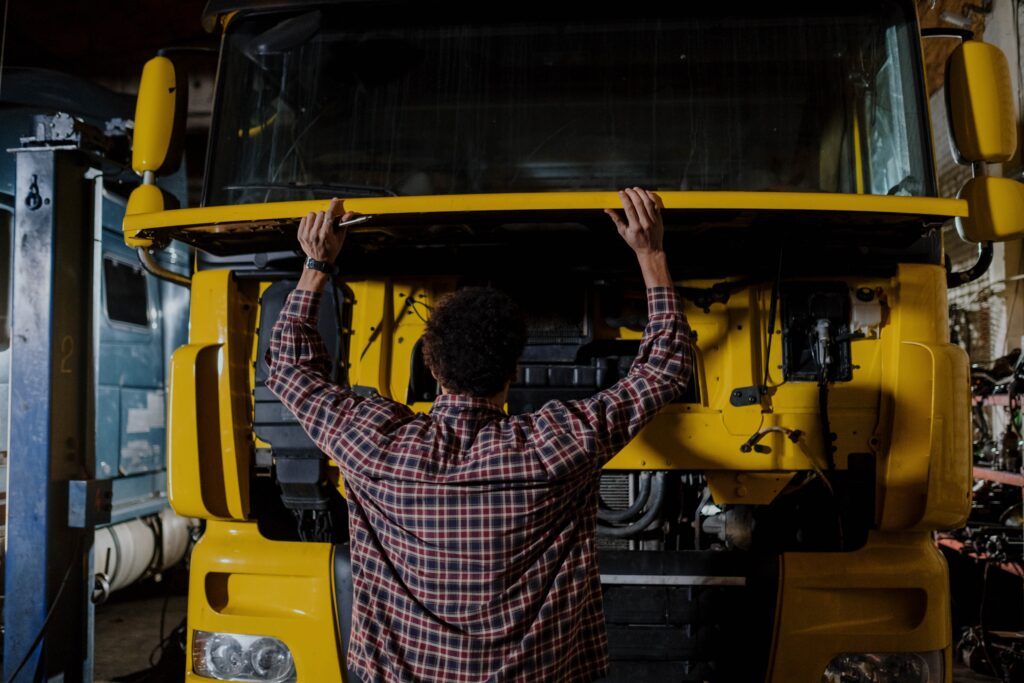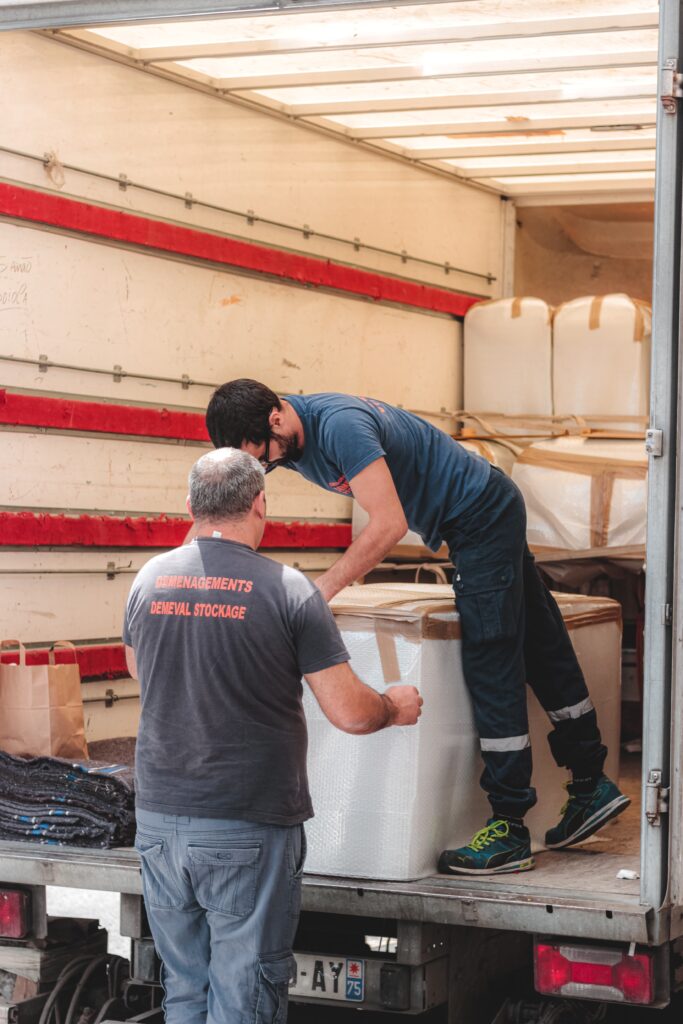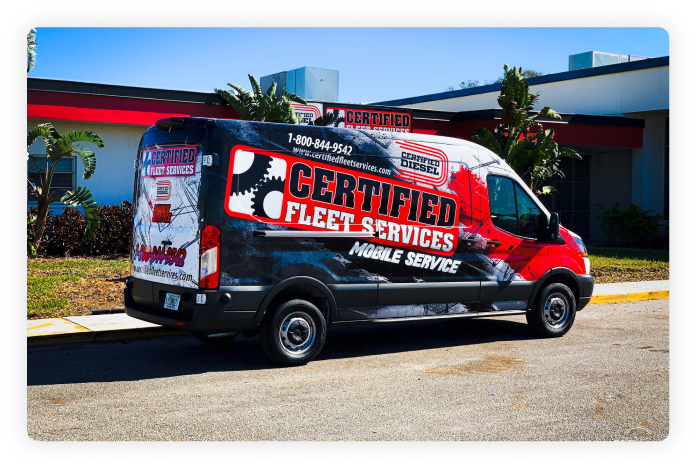46,270: the number of estimated traffic fatalities that occurred in the United States in 2022. According to Statista, that number is eclipsed only by 2021’s record-setting high of nearly 47,000 traffic deaths.
With more than 330 million people living in the United States today, there are more vehicles than ever on today’s roads. That means more potential road danger to avoid for a truck driver.
We understand what it’s like to be a truck driver (or a loving family member of one). Most of the technicians at Certified Fleet Services have either been truck drivers or worked on trucks for a solid portion of their lives.
We created this blog post just for you.
If you’re worried about how to be safe on the road — or what else can be done to ensure you and your payload arrive safe and sound — you’ll definitely want to check out our 11 tips for truck drivers (and their families) for safe vehicle handling, operation, and driving.
Read on to learn more: it may very well end up saving your life.
Tips for truck drivers by category
With more than 3,000 miles to traverse from the East to the West coast of the United States, truck drivers can spend up to two or more weeks on the road before returning home to their families. And as the amount of time on the road increases, the chance of a safety incident occurring also increases.
It’s no wonder truck drivers have to be vigilant, especially while logging 14-hour days and meeting tight shipping deadlines. So, we’ve decided to break down our tips for driver safety in to the following four categories:
- Before the drive
- During the drive
- After the drive
- Closing out the trip
Before hitting the road
Truck drivers: the following driving tips and safety practices are crucial to being prepared for the many hazards you may face while on the road. Before hitting the road make sure to:
- Plan well in advance
- Adhere to a solid preventive maintenance plan
- Secure your cargo
- Cover your butt with a dependable dashcam
We’ll discuss each of these tips in detail in the following sections.
Plan your trip in advance
This might sound like a no-brainer, but there’s no such thing as too much planning — especially when it comes to driving safely.
Rough weather conditions can lead to satellite communication going out, which is why we advise conducting a pre-trip DOT inspection of your vehicle and planning to have hard-copy maps of the route you’re driving (in case the GPS navigation system goes out). Most drivers use a detailed driver vehicle inspection form (DVIR) to make sure they don’t overlook any equipment areas needing further inspection.
For example, if you think you’ll encounter patchy snow or ice on the road during your ride, bring snow chains and a first-aid safety kit with you.
You can never prepare enough for the unknown, which is why we advise conducting a pre-trip inspection, printing out hard copies of anything requiring satellite navigation, and bringing a first-aid safety kit just in case.
Make sure your vehicle is well-maintained
Before operating a commercial vehicle, it’s important that your truck’s components and structures are in tip-top shape.
Whether it’s topping off brake and power steering fluid, ensuring the height and weight of your freight fit don’t exceed the weight-bearing capacity of your tractor-trailer, or making sure your tires can handle patchy work zones and wide turns, safe drivers know to stay up to date on repairs and with vehicle maintenance.
To avoid crashes and be ready for even the toughest road conditions, make sure your vehicle is up to date on oil changes and other time-sensitive vehicle maintenance. And if you’re unsure, don’t hesitate to reach out to your local mechanic or in-shop or mobile truck repair facility for assistance.
Secure your cargo
A driver’s number one priority — after returning home safely — is to deliver the payload on time and in great condition. Truck and bus drivers: never leave your destination without making sure that your cargo is securely fastened.
Federal Motor Carrier Safety Administration (FMCSA) regulations require that any item longer than 10 feet in length that isn’t blocked or prevented from moving forward must be secured by two tie-downs. If the item is 11 feet or longer, an additional tie-down must be used for every 10 feet of extra cargo length.
An unwieldy load can cause an accident on the road. To prevent any unexpected surprises while on the road, always check to see that your cargo is securely fastened to your vehicle.
Consider buying or renting a dashcam
There are so many elements battling for your attention as a truck driver: vehicles entering your blind spots, variable weather and road conditions, checking side mirrors every 8-10 seconds, and ensuring there’s plenty of room between you and the next driver in front of you.
While you may be keeping your head in the game and doing everything in your power to be the world’s number one commercial vehicle driver, a trucking accident can still unfortunately occur.
All too often truck drivers are blamed because of the heft and weight of their vehicles. For those moments when a vehicle has crashed into your truck despite doing everything you can to be safe, a dashcam can save the day.
A dashcam can capture the incident, so that if you’re ever accused of being at-fault, you’ll have a convenient video available on your cam as proof otherwise.
Plus, you can upload videos to cloud storage and view them later to see how you can improve your driving skills for the future. With a handy dashcam, you can drive with peace of mind.
During the drive: how to stay safe
Perhaps the largest safety threats occur during — not before — the drive. We recommend the following during-the-drive standard safety tips for truck drivers driving long distances:
- Practice defensive driving
- Avoid distractions from devices
- Take frequent breaks
Defensive driving tips: space, blind spots, and more
Practice defensive driving: we all learned this important lesson when we were studying for our driver’s license. It sounds cliché, but practicing defensive driving can save your life.
We recommend the following tips for defensive driving:
- Give other drivers plenty of space: most truck and bus drivers will need at least two football fields of length to come to a safe stop. If making a lane change, signal your flashers well in advance. And speaking of space, when it comes to entering or exiting your vehicle, maintain three points of contact to ensure your safety.
- Be aware of your surroundings: experienced truck drivers scan ahead about one to two city blocks for traffic issues, construction zones, and other dangers on the road.
- Share the road: Maintain a safe distance between you and the next vehicle.
- Maintain your lane: you can protect other vehicles by maintaining a solid space cushion between your vehicle and other vehicles on the road. Also, make sure your load is well-balanced and secure: an unbalanced load can cause a truck to swerve or rollover, which can be a huge safety hazard for others in and out of your lane.
- Slow and steady wins the race: Truck drivers have tight deadlines to meet. As a truck driver, it might be tempting to go just a few miles above the speed limit, but make sure to always follow the posted speed limit — even if no one’s near you. A safe driver is better than a dead one.
- Never take your eyes off the road: We can’t emphasize this enough: stay aware of your surroundings. Checking your mirrors every 3-10 seconds, following distance protocols, and being aware of vehicles entering the lanes next to you will help you and your payload arrive home safely.
- Always buckle up: wearing a seatbelt might be the most life-saving tips on our list. Not wearing a safety belt accounted for more than 60% of fatal crashes, an Arizona Department of Transportation survey of Arizona drivers found. To save lives, buckle up.
Many of these tips may seem intuitive. But after 10, 12, or even 13 hours on the road, it can be challenging to remember to practice them.
Prepare yourself — or your truck-driving loved one — by practicing these tips on short commutes to and from your home. Doing so could save a life.
After all, you just never know how your actions now can affect others.
Avoid distractions from cell phones
With GPS navigation, location-tracking software, and instant communication, cell phones have helped make our lives much easier. The jury’s still out on whether they’ve helped drivers stay safer, though.
Truck drivers: we recommend using a hands-free, Bluetooth-enabled cell phone to maximize your safety on the road while enjoying the modern convenience of technology.
Before texting and/or calling from the road, make sure you exit the highway, come to a complete stop, and find a safe place to complete your call and/or text.
Distracted driving kills. Text messages and phone calls can wait.
Stay safer on the road by pulling off at a truck stop or highway exit to retrieve that buzzing phone.
Take frequent breaks at roadside rest stops
Speaking of stops, driving long hours can make you drowsy! Truck driver fatigue is real.
The FMCSA has posted hours of service (HOS) regulations to ensure safe and healthy truck driving.
The regulations state that truck drivers must take a break at the following intervals:
- After 14 hours of on-duty time in a 24-hour period
- After 11 hours of consecutive driving (after 10 consecutive hours off duty)
- After 8 hours of driving time before a required 30-minute break
A 10-hour off-duty period resets each 14-hour on-duty and/or 11-hour drive time for truck drivers. If in doubt about when and how long your drive time and break must be, plan your trip in advance.
You’ll feel better while driving knowing that a long break is just around the next corner.
Once you’ve arrived: safety best practices
Once you or your loved one has arrived, congratulate yourself! You’ve just arrived at your destination after hauling a 72-foot-long, 25,000-pound 18-wheeling beast across the state. That’s no easy feat!
Now that you’ve arrived, there’s just a few more best-practice safety measures to take to ensure you stay safe moving forward. To ensure your safety, we recommend:
- Inspecting your destination to make sure it’s safe for unloading
- Conducting a post-trip inspection on your truck
- Finding a safe space to unload freight with care
Inspect your destination and truck
You’ve finally arrived safe and sound at your destination. But you notice a few pieces of glass, a slick material at the dock, and few — if any — palettes or places to unload and dock your precious cargo.
Unfortunately, many trucking accidents also occur at a trucker’s loading and unloading destination. That’s why you’ll want to make sure the loading space is clean and safe for unloading.
CDL drivers: to unload and operate safely, make sure to check if any freight is resting against the door of your trailer. Once cleared, check if any workers or lift accessories are still in the trailer.
If cleared, you may begin pulling away from the loading dock. Trust your gut: if it looks sketchy, don’t start loading or unloading until it’s safe to do so.
Unload freight with patience and care
When it comes time to unload freight, you’ll want to make sure you bend from the hips and knees to squat, then straighten your legs to lift. We’re no doctors, but lifting with your back can cause serious damage, and so we’d hate to see you drive all that way only to injure yourself in the final steps to your load’s intended destination.
By lifting freight with care, you’ll be saving your body from further injury and damage. Your loved ones will thank you for it.
Post-trip safety measures
As you finish your trip and are crossing your “t’s” and dotting your “i’s”, there are just a few last items to check off your list before you can say you’ve done everything in your power to create as safe and relaxing an experience as possible for you and other drivers on the road.
The following post-trip driving tips for truck drivers will help ensure that the road ahead is paved with success for you and your commercial motor vehicle:
- Conduct a post-trip inspection
- Securing your vehicle before clocking out
Conduct a post-trip inspection
FMCSA’s Section 396.11 requires all drivers to write a report “at the completion of each day’s work” regarding how the vehicle operates. To ensure safety on the road for future trips — and to avoid potential penalties from being out of compliance — make sure to conduct a post-trip inspection of your vehicle.
Doing so will save you time and money, and will help ensure your vehicle is ready — and safe — for future hauls.
Secure your vehicle before clocking out
Now that you’ve conducted a post-trip inspection and have dropped off your cargo, all that’s left is to lock the doors and make sure that everything in the truck is secure.
If you find that something needs repairing, make note of it in your post-trip inspection. Before using your vehicle for future freight trips, make sure to bring it into a certified fleet mechanic.
After all, an organized and secure truck is a safe truck. And a safe truck will help bring you home to your loved ones.
Call it a day the Certified way
Many truck drivers will wait until something goes wrong before deciding to fix their truck — But by then it may be too late.
The best way to avoid accidents and to ensure your safety and the health of your vehicle is to bring it in to a certified mechanic.
At Certified Fleet Services, we have more than 20 years of dedicated experience fixing trucks, large vehicles, and other fleet equipment. Whether it’s your braking system, steering system, or other heavy duty equipment, you can rest easy knowing that you have a master, ACE-certified technician’s eyes on your vehicle.
Call it a day the Certified way: check out our blog, or contact us today to learn more about what our Certified fleet technicians can do for you.





















